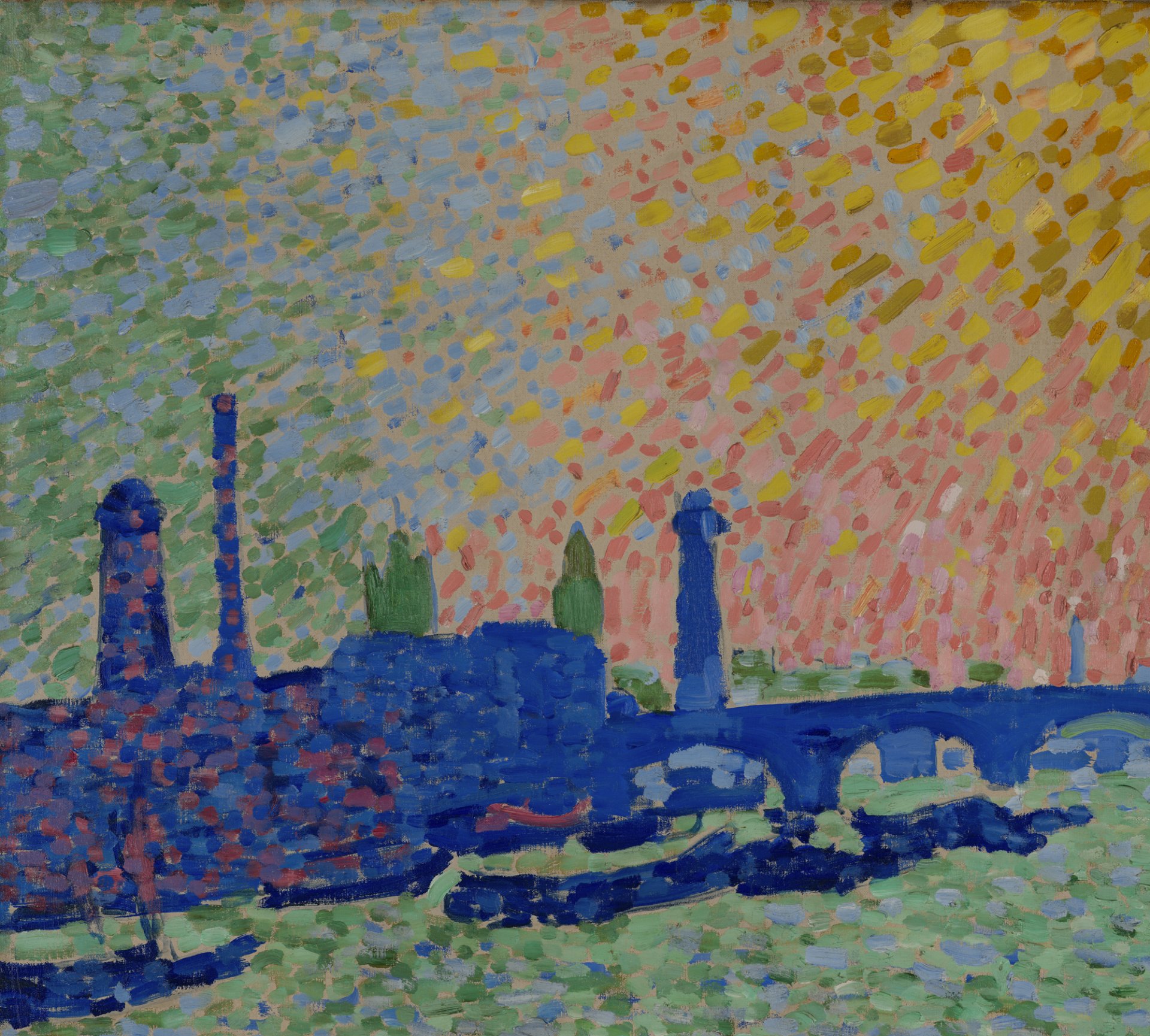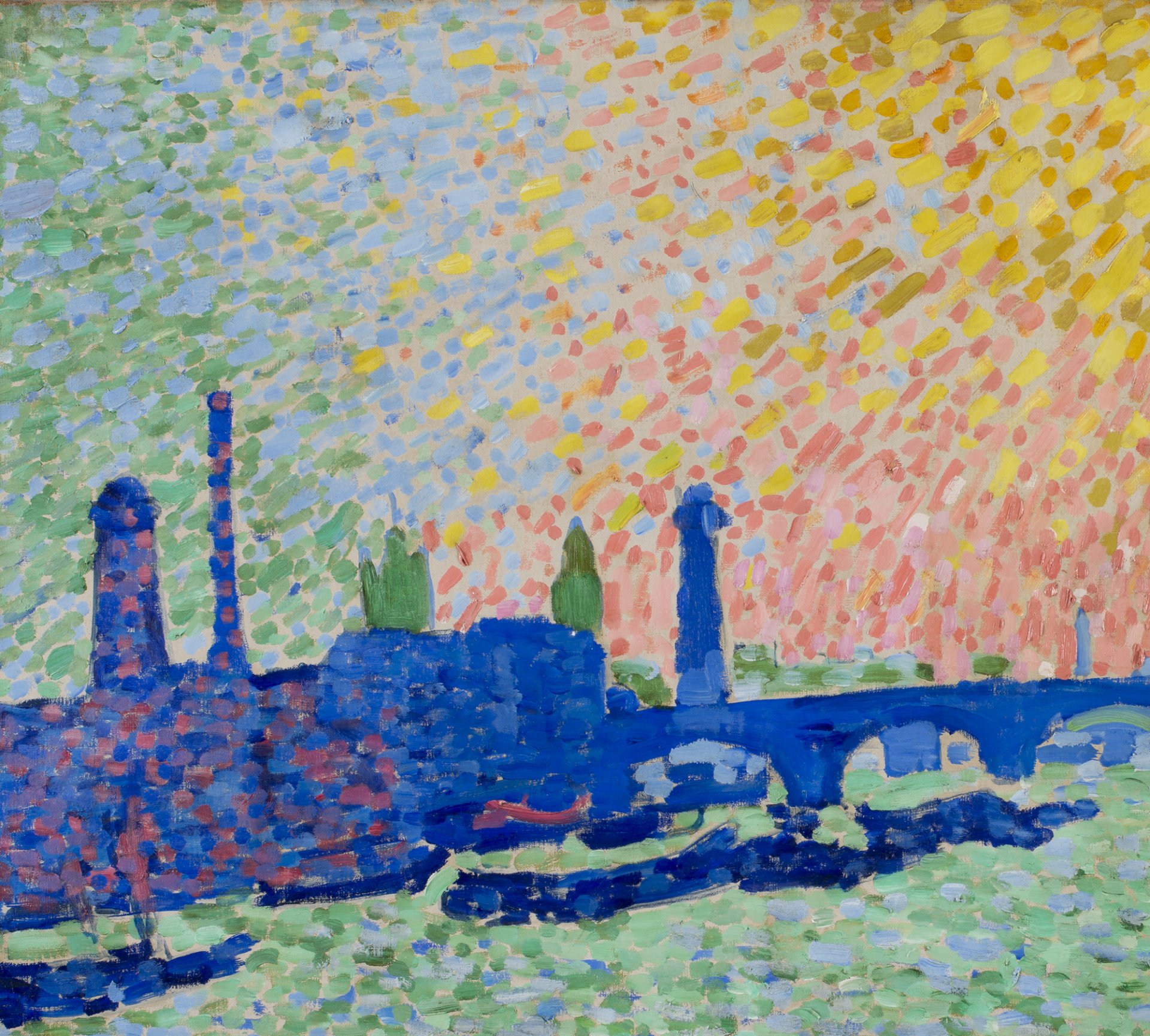Recovering the light. Restoration of Waterloo Bridge, by André Derain
El vídeo de arriba es para uso exclusivamente decorativo dentro de está página.
Restoration and technical study
The restoration of Derain’s Waterloo Bridge was an exhaustive process which lasted 15 months and was aimed at recovering the colours and luminosity of this masterpiece.
Scientific research using techniques such as X-radiography, infrared reflectography, photography and analyses of materials was carried out to study the artist’s palette and way of working in depth.
Following the study of the artist’s technique, complex restoration work was performed. This involved tasks ranging from reinforcing the canvas to consolidating the paint layer. Dirt and grime were removed, as was yellowed varnish.
As a result, the painting has gained depth and recovered the vibrant light and vivid colours that characterise this great painter’s works.
The technical study and restoration were made possible by a crowdfunding campaign involving more than 200 donors, among whom our friend and patron Sabela González and the companies Spain Inside and Tauck. Special mention is due to the Friends of the Museum, as their collaboration accounted for 68% of the donations from individuals.
The Canvas
Waterloo Bridge, by André Derain, is part of a series of works inspired by the artist’s stays in London from 1906 to 1907, on assignment from the dealer Ambroise Vollard.
This painting shows a panoramic view of the old Waterloo bridge seen from Victoria Embankment, with Whitehall Court in the background on the right and, on the left, the chimneys of the industrial buildings of Baltic Wharf on the south bank of the river.
The artist made many sketches of this place and used them as a basis for numerous paintings. Among them is a drawing that is similar in form and colour to our painting.
Derain employed a linen canvas bearing the stamp of the Winsor & Newton brand on the reverse.
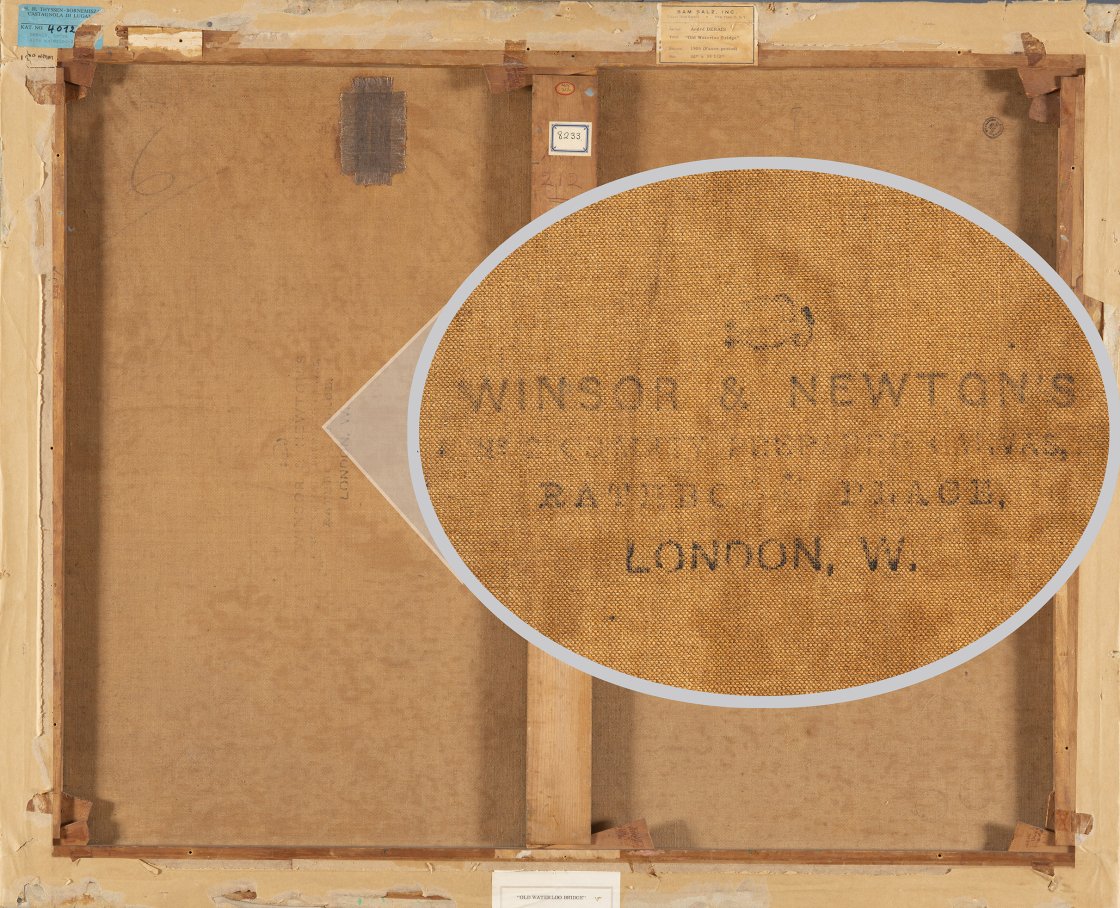
This raises the question of whether he began painting the picture in London or took this canvas back with him to France, where he could have executed based closely on the form and colours of the preparatory drawing.
The canvas is attached to a stretcher with a vertical crossbar to reinforce its structure. The image of the reverse of the work shows various original stamps and labels, key elements for studying the painting as they provide crucial information about its provenance and the places to which it has travelled. It also tells us more about the condition of the work and the materials the painter used.
In this case the canvas employed by Derain has the edges are cut and display a white layer of commercial primer. This leads us to think that he may have purchased the canvas ready-prepared, trimmed it by hand and tacked it to the stretcher. He then painted it faithfully following the form and colour of the preparatory drawing.
The Painting Procedure
The ground was applied in two layers. The lower one is rich in calcium carbonate, with the presence of lead white and silex. The upper one is composed of the same materials but has a higher concentration of lead white, probably to enhance the luminosity of a layer that he intended to leave unpainted in many places.
In the central area the artist laid out the composition using a brush with very light oil glazes of ultramarine blue. Over this underlayer he began painting the city’s horizon line with the bridge. He structured the composition by dividing the canvas into two distinct parts. In the upper half the strokes are vertical and start from the right-hand corner, where the sun is.
In contrast, in the lower half he applied the paint in thick dabs of ultramarine blue and emerald and chrome green, creating the effect of moving waters with horizontal, overlapping brushstrokes. These almost pure superimposed colours convey the depth of the water. The artist thus accentuated the force of a very powerful light that falls on the city and is reflected in the paint-laden strokes of the river.

The Colour Technique
This painter’s rich palette is full of reds (vermilion, naphthol red and red earth), zinc yellow and chrome orange, almost straight out of the tube and applied in juxtaposed brushstrokes in a pictorial language characteristic of this artist.
There are hardly any shadows in this very luminous painting. Derain used contrasts of colours to achieve the volume and depth he needed.
The work is an ensemble of vivid colours applied in a mosaic of loose brushstrokes that allow the canvas to show through, its light ground layer acting as an innovative pictorial device. Derain depicted this London cityscape using a pictorial language of his own to produce a unique view of the city rendered in a bold palette.
Technical Study
Imaging techniques and analyses of materials carried out in the conservation department’s laboratory enable us to discover the painting procedure employed by Derain and the condition of the picture
This raking light photography shows the volume of the brushstrokes Derain applied to the canvas.
The thickest areas are those in the sky, especially in the upper right corner where he depicted the intensity of the sunlight. In this area the brushstrokes are vertical but become more diagonal towards the left side. This lends the work great movement and expressiveness.
In the central area of the horizon, where the bridge and the buildings are, the paint is applied more thinly, smoothly and almost continuously. This gives the landscape depth. But in the area of the river, the artist again applied the paint more thickly. Here the strokes are more horizontal, with a movement that simulates the waters of the river.
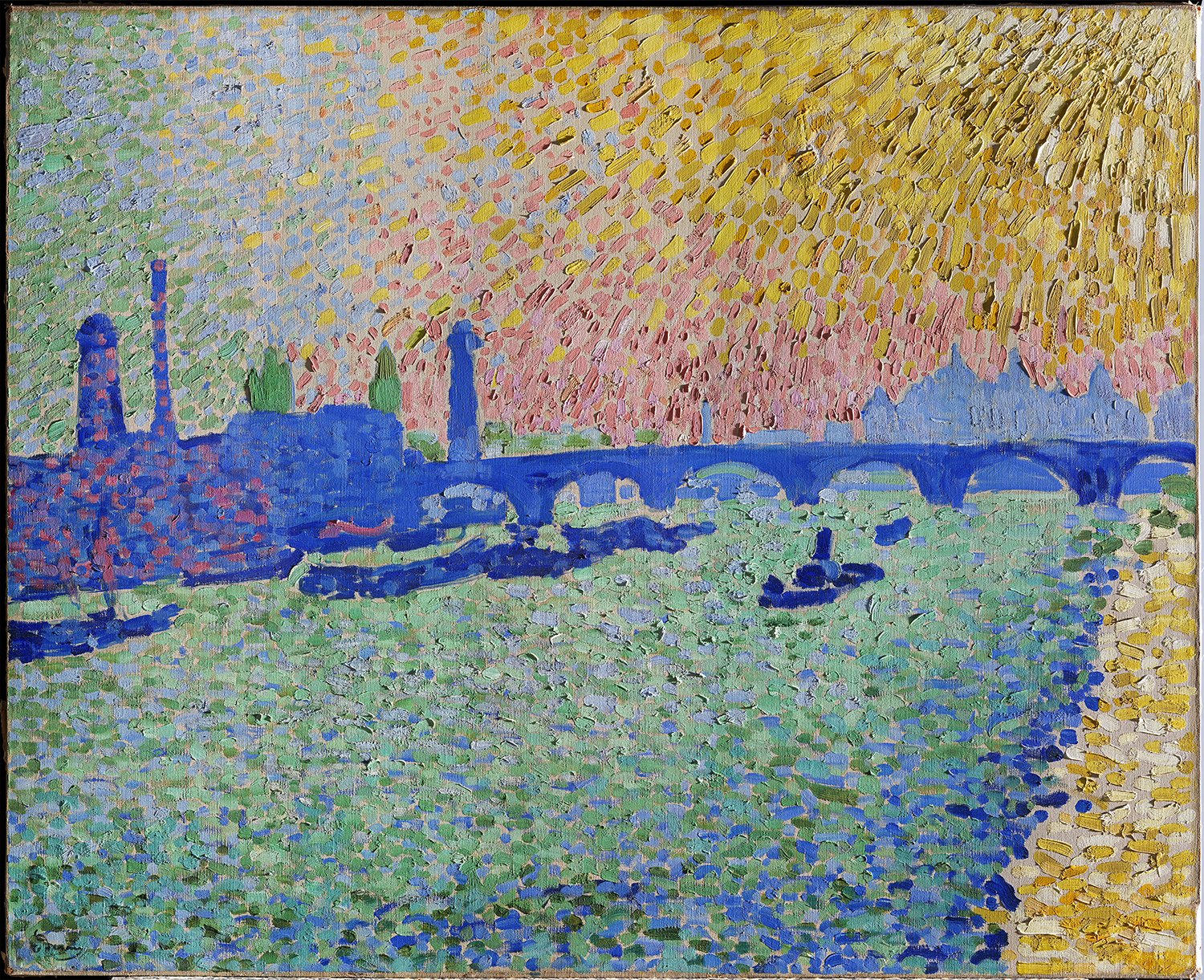
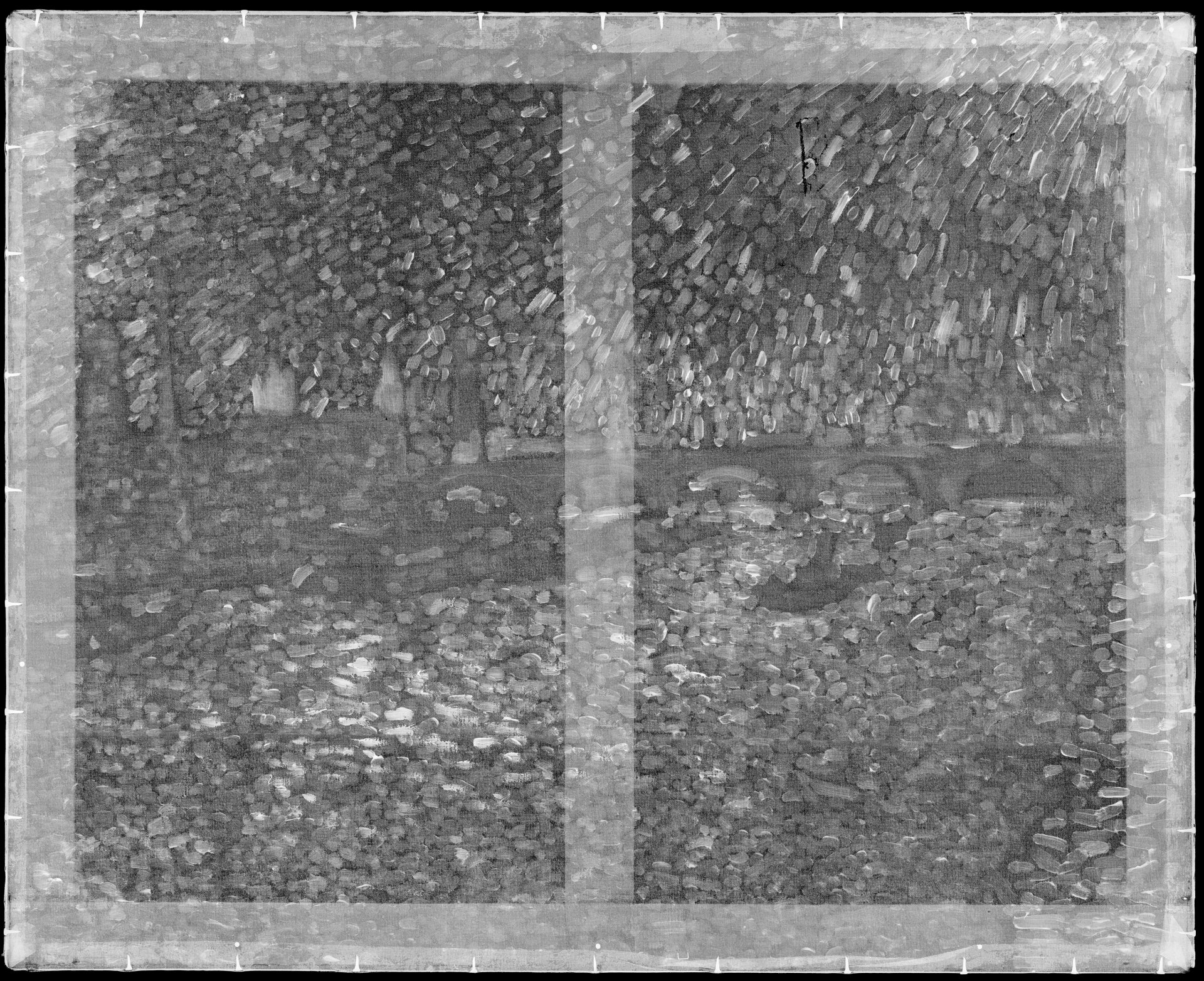
The X-ray image shows no changes with respect to the composition that is visible to the naked eye. This confirms that the artist remained faithful to his initial idea, which matches the preparatory drawing.
The edges of the canvas display ground and traces of paint and extend past the perimeter (between 1.5 and 3 cm). This leads us to think that even though it is an industrial canvas it was not initially cut to the exact size of this stretcher.
The painter could have purchased the Winsor&Newton (photo of detail of the reverse) canvas ready primed in London and taken it back with him to Paris. There he tacked it to a stretcher, trimming the edges by hand somewhat unevenly, and painted the cityscape from memory based on the initial sketch.
The study of the canvas reveals that the work is painted on a single piece of plain-weave canvas with fine, evenly distributed threads. It is affixed with tacks to a double-key stretcher with a central reinforcing crosspiece.
The ground is fine with low X-ray absorbency and the artist deliberately left it exposed. We can therefore confirm that Derain composed the entire picture from loose strokes in a sort of mosaic full of movement.
X-radiography shows the work to be in good condition, though there is some damage in places such as a tear in the upper right corner, which had been repaired with a patch, and deterioration at the edges due to rubbing and tension.

This image with transmitted light shows the reverse of the work lit from the front. This enables us to observe the light passing through the painting and reveals the structure of the brushstrokes Derain used to compose the picture and the condition of the canvas.
In the central area the brushstrokes are light and continuous, and the canvas of the support is barely visible. In the upper part of the work where the sky is and in the lower part depicting the river the strokes are thickly applied, rarely overlapping, and are a certain distance apart. These characteristics confirm the expressiveness of Derain’s manner of painting.
This imaging technique also reveals damage to the support, in this case small holes and a tear in the canvas in the upper left area, which had been repaired with a patch. Labels and inscriptions revealing the places where the work has been and its provenance are also visible.
Analysis of the materials
Derain used a linen canvas with a white ground, over which he applied oil paint in small, loose strokes of vivid, almost pure colours in a rich palette ranging from zinc yellow, chrome orange and reds (vermilion, naphthol red and red earth) to emerald and chrome green and ultramarine blue.
The ground has two layers. Calcium carbonate, silex and lead white are present in both, though the upper layer contains more lead white, probably to give the painting a lighter overall tone, as the artist intended to leave it exposed in many areas.
Stratigraphic studies confirm the application of a fairly thickly layer of paint beside areas where the fine ground layer is visible. This painting device characteristic of Derain’s working method shows that he aimed to produce a very luminous painting in a highly expressive language. He applied a final protective layer of colophony resin varnish.
Microsample: Cross-section of a microsample taken from the right side with pink over yellow. The image show the sequence of paint layers viewed with visible light
The first two white layers correspond to a double primer made with calcium carbonate and lead, barium and zinc white pigments. The yellow paint of the sun's rays, consisting of zinc yellow and lead white, was applied over these white layers, followed by the final highlights in a pinkish tone made from a mixture of vermilion and cadmium orange in a matrix of lead white and zinc white. All the layers are bound in oil.

Recovering the light
Recovering the light that Derain’s painting originally displayed was a challenge for the restorers
To gain full information about the work’s condition and the artist’s working method, scientific research was conducted using techniques such as X-radiography, infrared reflectography, photography and the analysis of materials.
The results of the scientific analyses revealed an uncommon painting technique of juxtaposing strokes of almost pure colour with unpainted areas.
The picture had deteriorated over time and complex restoration work was required. This involved reinforcing the canvas and consolidating the paint layer, as well as removing dirt and aged varnish.
The support displayed structural damage, especially around the perimeter, where tears in the canvas could compromise its tautness and physical stability. This was remedied by stitching the tears and attaching reinforcement strips around the edges. In addition, there was evidence of early damage to the canvas in the upper right area of the sky, which had been treated by applying a thick patch. It was not removed because the paint layer remains stable.
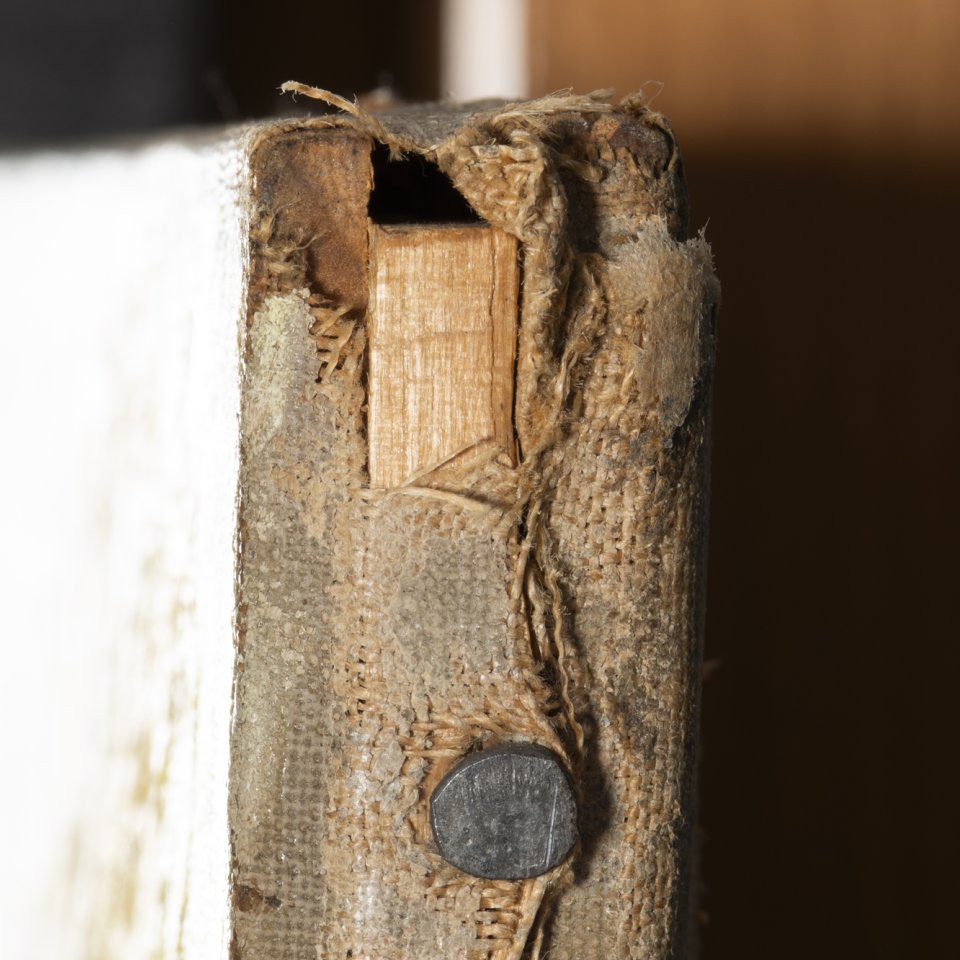
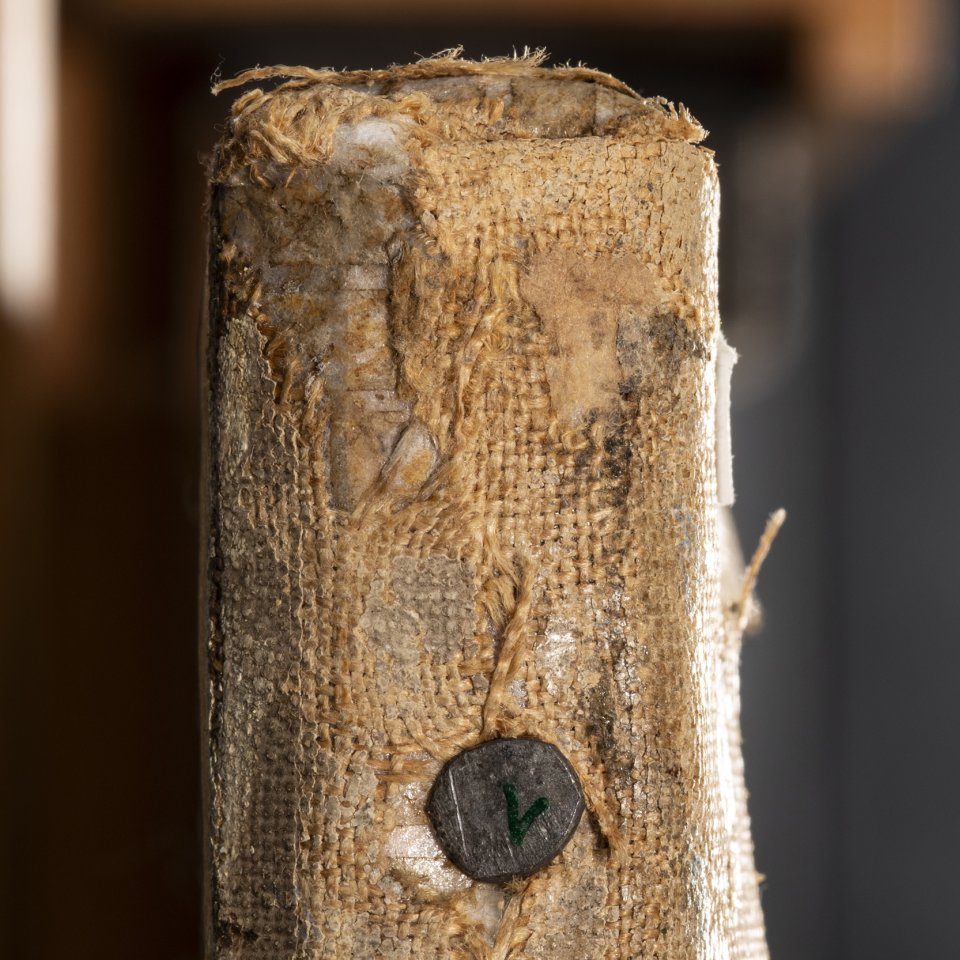
The paint layer displayed surface grime caused by pollution and remains of yellowed colophony varnish, which had distorted the picture’s atmosphere.
Removing these materials was a highly complex task due to the different volumes and densities of the paint layer. Sometimes each pigment reacts differently to solvents, calling for a painstaking and specific approach to the cleaning process. And in this painting the ground, which is particularly sensitive, was exposed, requiring different and more careful work.
As a result, the painting has gained death and has recovered the vibrant light and vivid colours that characterise this great painter’s Fauvist works.
